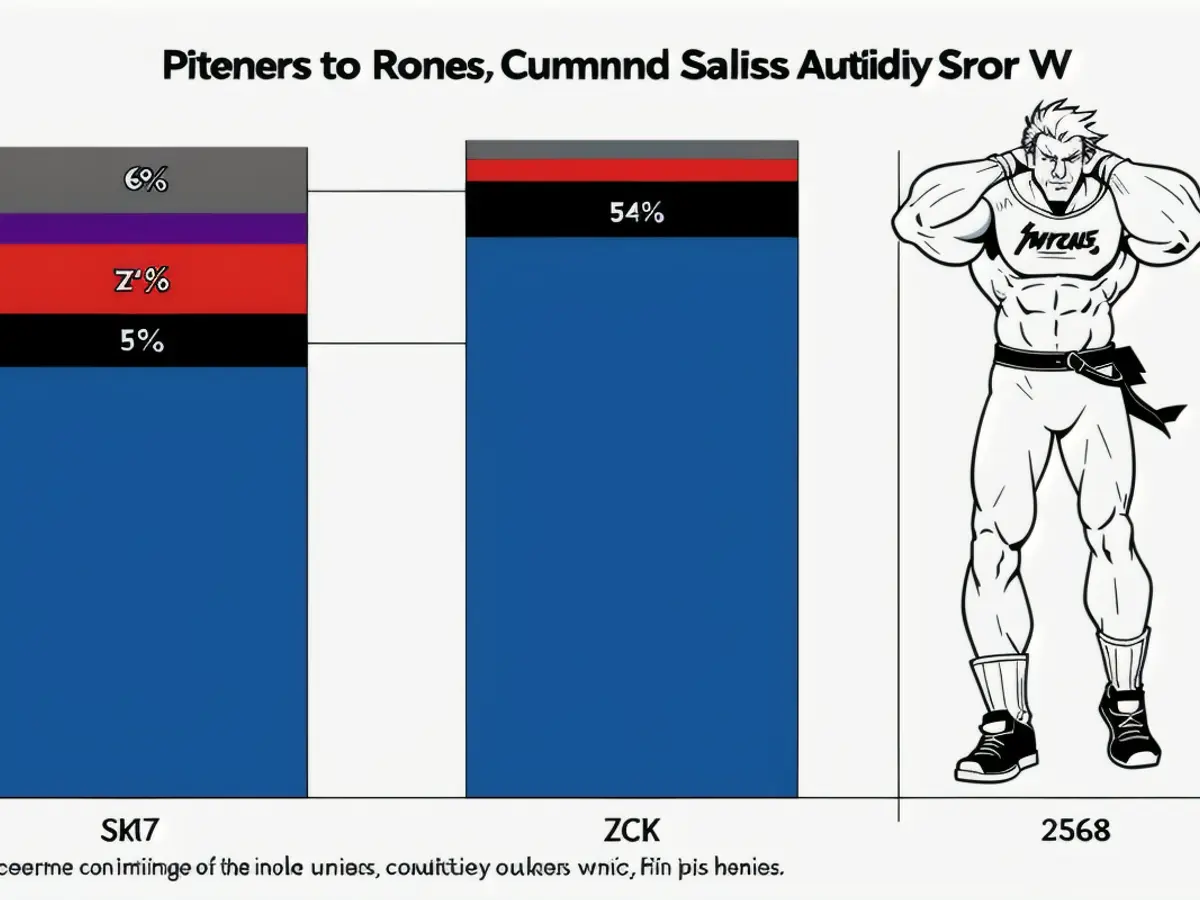Virtual Realm Domination Remains Elusive for Meta Quest, However, Glasses-Based Tech Could Potentially Lead the Field
Swapping Headsets for Glasses: The Rise of AR
Trends are shifting in the tech world, with virtual reality (VR) headsets taking a backseat to augmented reality (AR) glasses. Despite an upsurge in cheap VR headsets like the Meta Quest 3s, global VR shipments dropped by 12% year-over-year in 2024, and industry analysts predict this downward trend could persist.
The reason? Consumers aren't exactly keen on donning heavy VR headsets. Instead, they're looking for sleek, smart glasses packed with AI technology. With AR glasses, they can embrace the future without awkwardly shoving a screen in front of their eyes.
In 2024, VR headset shipments plummeted by 5% in the last quarter. Even Meta, the driving force behind the VR hype, couldn't stem the tide with its $300 Meta Quest 3s. Sony managed to hold onto its 9% share thanks to the software integration of its PCVR and PS VR2, but the appeal of VR is starting to wear thin.
The same goes for Apple's Vision Pro, which saw a 43% drop in shipments in the last quarter of 2024. Even a brief sales boost in global markets didn't help its abysmal market share of 2%.
Counterpoint foresees a grim future for VR, predicting minimal growth in the coming years due to a dearth of engaging content and persistent discomfort issues.
But all is not lost for the big tech players. They're already setting their sights on AR glasses. After the unexpected success of the Meta Ray-Ban, Meta plans to release half a dozen new AR glasses in 2025, aiming to conquer the market just as it did with VR. Apple, too, is rumored to debut its long-awaited smart spectacles project in the next few years.
Other tech giants like Samsung, Google, and even Google with their Project Moohan AR headset, are jumping on the AR bandwagon. But as for AR glasses, they still face challenges, such as cramming powerful computers into sleek, wearable devices, and finding an irresistible use case beyond the capabilities of smartphones.
In the chaos of wires or chatty AI assistants emanating from the glasses, will AR glasses succeed where VR headsets fell short? Only time will tell.
Enrichment Data:
Predicted Trends for AR Glasses Market Growth Through 2026
- Growth Rate and Market Size:
- The AR glasses market is projected to skyrocket, with revenues from AR glasses projected to surpass USD 35 billion by 2026[1][3].
- The global AR market, including AR glasses, is expected to grow at a staggering CAGR of 39.5% from 2024 to 2033, reaching USD 591.7 billion by 2033[3].
- Unit Sales:
- AR glasses unit sales are expected to surge from approximately 2.11 million in 2023 to 3.9 million by the end of 2024[1].
- Counterpoint anticipates a whopping 30% YoY growth for AR glasses through 2026, driven by AI integration[2].
- Key Drivers:
- AI Integration: AI features are a significant factor pushing the growth of AR glasses, as they provide improved user experiences and functionality[2].
- Enterprise Demand: AR glasses are gaining popularity in sectors like education and healthcare, fueling market expansion[2].
Declining VR Headset Market
- Decline in Shipments:
- The global VR headset market has seen three consecutive years of decline, falling by 12% YoY in 2024[2].
- Challenges:
- The VR market battles challenges like weak consumer demand, technical hurdles, and inadequate content, hampering its growth[2].
- Despite enterprise demand, persistent issues like eye strain, weight-performance trade-offs, and insufficient content beyond entertainment continue to deter VR adoption[2].
Comparative Analysis
- AR vs. VR Growth: While the AR glasses market demonstrates rapid growth due to technological advancements and broader applicability across industries, the VR headset market remains stagnant due to consumer skepticism and technical obstacles.
- Market Opportunities: The AR sector benefits from its versatility in industries like retail, manufacturing, and healthcare, while VR is mainly geared towards entertainment, limiting its growth potential.
- Technological Evolution: In addition to its interlinking with AI, enhancing its capabilities and user experience, AR glasses are anticipated to generate further market expansion[2][3].
- tech companies are reportedly planning to shift their focus from virtual reality (VR) headsets to augmented reality (AR) glasses, as the latter's market growth is projected to surpass USD 35 billion by 2026.
- The AR glasses market is expected to grow at a rapid CAGR of 39.5% from 2024 to 2033, driven by AI integration and growing demand from sectors like education and healthcare.
- In contrast, the VR headset market has seen three consecutive years of decline, with global shipments dropping by 12% year-over-year in 2024, largely due to consumer skepticism and technical obstacles.
- AR glasses still face challenges such as cramming powerful computers into sleek, wearable devices, but if they can overcome these hurdles, they might succeed where VR headsets fell short.









